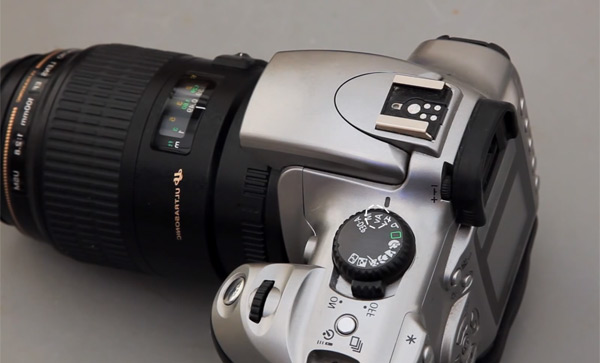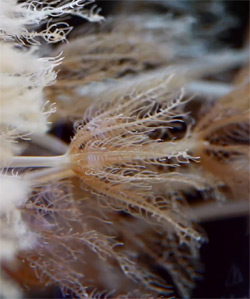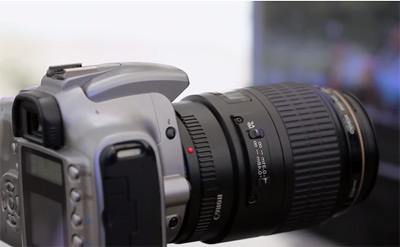At its core, the reef aquarium hobby is a pursuit of aesthetics. We seek out visually appealing fish and corals and look for inspiration in other aquarists’ tanks. More and more reef hobbyists want to share their hobby with others online, and that’s when things fall apart. It is not that there’s a problem with the reef tank, but that the photo taken doesn’t do the real thing any justice.
Sometimes, the photo just comes out with the colors wrong or the exposure messed up so the bright areas are just lost in overexposed blotches. There have been times when people show me pictures of coral they found online and I have to explain to them that in real life, it will not look like that because most of the aesthetics that grabbed their attention in the first place were visual artifacts in the taking of the photo that exaggerated the color. Most of the time, this is unintentional on the part of the photographer.
Our reef tanks happen to be among the most challenging subjects to shoot. Chief among these challenges is the fact that our aquariums are dark subjects. For all the marketing aquarium lighting companies do to promote the incredible intensity of their fixtures, the fact of the matter is, our tanks appear dim to cameras. In fairness to these companies, the lights do what they are supposed to do. They are designed to keep our corals alive. Actually, aquarium lighting today is more than powerful enough to fry all your corals, but photography is a different animal altogether. Photography demands very strong light in a very different mix than what we normally provide.
Basics of exposure
Light intensity issues can be resolved through a better understanding of exposure. Techniques to achieve proper exposure are the fundamental building blocks of photography and need to be understood before delving into other topics, such as post processing and composition. Let’s go over the basics.
A digital camera with manual settings allows the photographer to adjust three important parameters to control exposure. These parameters are aperture, shutter speed, and ISO. In the past, this sort of manual control was only available in DSLR cameras; however, it is now possible to find iOS or Android apps for our smart phones that allow manual control. Let’s take a closer look at each of these three parameters.
1) Aperture
Aperture is the size of the opening in the lens that allows in light. A larger aperture is desirable because it allows in more light than a smaller aperture. Aperture is measured in terms of an f-number, or f-stop. The f-stop is a fraction, so f/8 is a smaller aperture than f/2.8. The largest apertures available on most lenses are f/2.8 to f/4.0. Some specialty prime lenses can open up to an incredible f/0.98, but you can expect to pay well over $10,000 for one of those.

If you are a film geek like I am, here is a bit of trivia: The largest aperture lens ever used in cinema was in Stanley Kubrick’s Barry Lyndon. He somehow acquired a Zeiss f/0.7 originally designed for a NASA space mission. It was so sensitive to light that a single candle would fill a banquet hall with light.
Large apertures also come with an associated side effect. Your photos will have what is called reduced depth of field, which means the subject will be in focus while the background will appear out of focus. On one hand, this is a great creative effect if you want to isolate a subject and deemphasize everything in the background. It can be a hindrance, however, if you want to get everything in focus. When I shoot, I try to stay around f/8 to f/11 to get as much of the subject in focus as possible. On the other hand, if I want to isolate a single fish and blur out the background into a creamy swirl of color, I open up the aperture and shoot at f/2.8.
2) Shutter speed
Shutter Speed is how fast the shutter stays open to allow in light. When shooting dim subjects, having a slower shutter speed allows in more light. The tradeoff is the slower the shutter speed, the more susceptible the image is to motion blur from both the subject moving and shaking from handholding a camera.
3) ISO
Lastly, we have ISO. The term “ISO” is an artifact from film cameras, referring to film speed. In digital cameras today, obviously there is no film, so what ISO means in the digital context is sensor sensitivity. It is possible to “dial up” the sensor to be more responsive to light. The downside to manipulating the ISO in this manner is that it introduces noise artifacts into the image and the image looks more grainy, flatter, and less dynamic. A good analogy to understanding ISO is a radio or cell phone with poor reception. Turning up the volume helps to hear the words, but by doing so you also hear more of the static.
Hose-and-bucket analogy
The best analogy I’ve ever heard to describe the relationship between aperture, shutter speed, and ISO is a hose filling a bucket. Picture yourself trying to fill a bucket with water. The goal is to fill the bucket as quickly as possible.
The diameter of the hose represents aperture. The larger the hose, the greater the flow rate. The shutter speed is how long the water stays running through the hose. A narrow hose will require a longer time period while a larger hose requires a shorter time period. ISO is a little more abstract in the bucket analogy, but it can be thought of as the type of liquid being poured. Instead of water filling the bucket, imagine it is shaving cream that rapidly expands. To fill the bucket with shaving cream, it takes less time and a smaller hose than filling it with water. The down-side of shaving cream is that it is opaque compared to water and that opacity interferes with the final image. The job of the photographer is to find the best balance of aperture, shutter speed, and ISO while minimizing the drawbacks of each one discussed above.
Tank lighting and photography
At Tidal Gardens, we get asked all the time whether we shoot our pictures under LED. I can guess the reason people ask. LED-lit tanks, especially those dominated with blue and royal blue LEDs, have a distinct ultra-fluorescent appearance that is, shall we say, less natural in appearance. The colorful highlights are greatly exaggerated, so they likely think the coral won’t look like that in their tanks.
The short answer is no. Tidal Gardens does not shoot under LED’s, but it has nothing to do with the natural or unnatural appearance of corals. The real reason is that LEDs are the worst lights to shoot under. LEDs have very narrow spectral peaks compared to other types of light that tend to have a more robust spectrum. Our eyes manage to see the color better than a camera sensor, so it doesn’t seem so bad. On the contrary, corals look great! However, all a camera sees is a massive overload of single colors, and the resulting image is covered in blobs of blue and purple with zero detail. T5 and MH bulbs will give you the best looking photos, so we primarily shoot under a mix of natural sun and T5.

Practical tips to improve reef photography
1) Use a tripod
A tripod is possibly the most effective accessory that can be purchased to improve photos. Keeping the camera as still as possible allows the photographer to use longer shutter speeds. Any shutter speed slower than 1/60th of a second risks the introduction of blur from shaky handholding. By placing the camera on a tripod, it is possible to shoot with longer shutter speeds (over 1 second) provided that the subject is relatively immobile (an invertebrate or coral).
A tripod won’t help much with taking pictures of fast-moving fish because it is the movement of the fish that is the problem, not the movement of the camera. In order to take clean images of fish, the photographer will need to use a shutter speed that is fast enough to freeze motion, the slowest of which is around 1/250th of a second. Some photographers try to shoot for something closer to 1/400th of a second. A shutter speed this fast is challenging to attain because it does not allow in very much light. To get this picture to come out, one must likely boost the ISO and open the aperture of the lens fully to compensate. Alternatively, a flash can be used to introduce more light.
2) Use a remote shutter release
A remote shutter release sounds very technical, but it’s merely a wired remote control that you can use to take a photo. The key is, a remote shutter release allows you to take a photo without pressing down on the camera’s button. When using certain lenses, a slight bump of the camera can ruin the photo, so it’s preferable to avoid touching the camera when snapping the picture.
Alternatively, many cameras have built-in timers so you can press the shutter and in 2-10 seconds the camera takes the picture. This fixes the problem of touching the camera while the shutter is activated; however, I am impatient and purchased the remote shutter release for my camera.
3) Shoot perpendicular to the glass

Reef aquariums present a unique challenge to photographers in that most of the time the shot will be taken through the glass. The glass itself acts as a lens and can introduce severe distortion. The greater the angle, the worse the distortion. This distortion makes it appear that the subject is smeared or slightly out of focus. The immediate inclination is to start playing with the focus, but the image will never focus properly. The solution to this problem is to try to shoot perpendicular to the glass as much as possible.
Sometimes I am trying to shoot a piece of coral and the best angle isn’t that perfect 90 degrees. I end up looking at the side of the coral, and it’s just the wrong composition. Instead of angling the camera to try for a 45-degree shot through the glass and dealing with all that distortion, I will physically move the coral in the tank to get the angle I want.
4) Use a viewing box
In the event that a perpendicular shot through the glass just isn’t possible, shooting with a viewing box may be the solution. Think of a viewing box as a scuba mask for your camera. It allows you to maintain that perpendicular orientation to the window as you look around in the water. Viewing boxes are the perfect tools for taking top-down shots, which can be very rewarding, as for many corals, and even fish, the top-down angle is the most flattering by far.
5) Use an underwater housing
If you are insane about reef photography, there is the option to go all out and purchase an underwater housing for your camera. With a quality housing, not only can you fully submerge your camera in your tank, but you can also take it snorkeling or diving.
A good housing, however, can be very expensive and will only work with the camera model you choose. They are built like a tailored suit to account for the controls to a specific camera. Even slight updates from one model of camera to the next year’s model will likely mean the housing no longer fits.
Conclusion
In summary, photography of our reef aquariums can be a challenging endeavor. Understanding the basics of exposure and light will go a long way towards improving the photographs you take and share with other enthusiasts.



